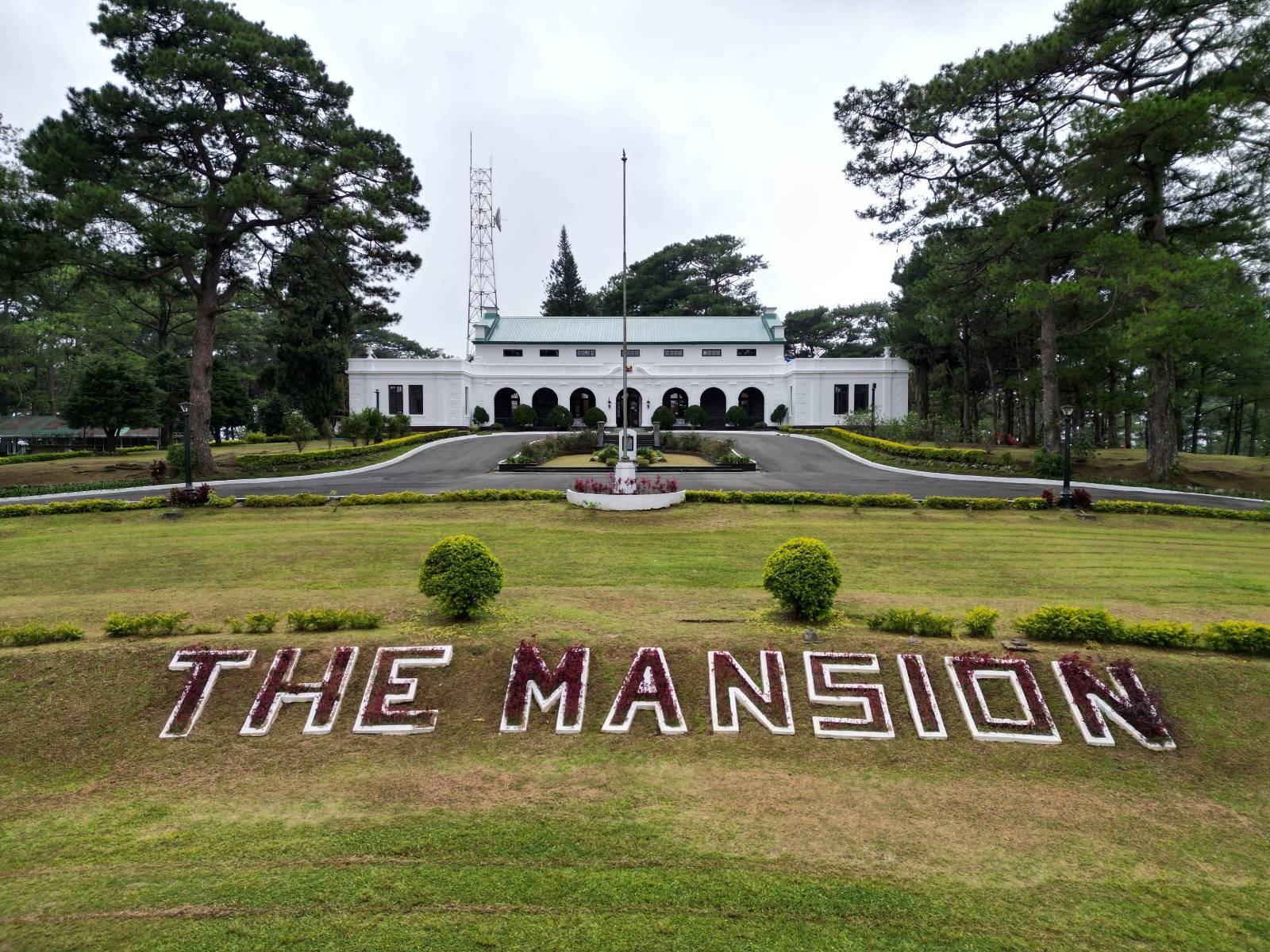
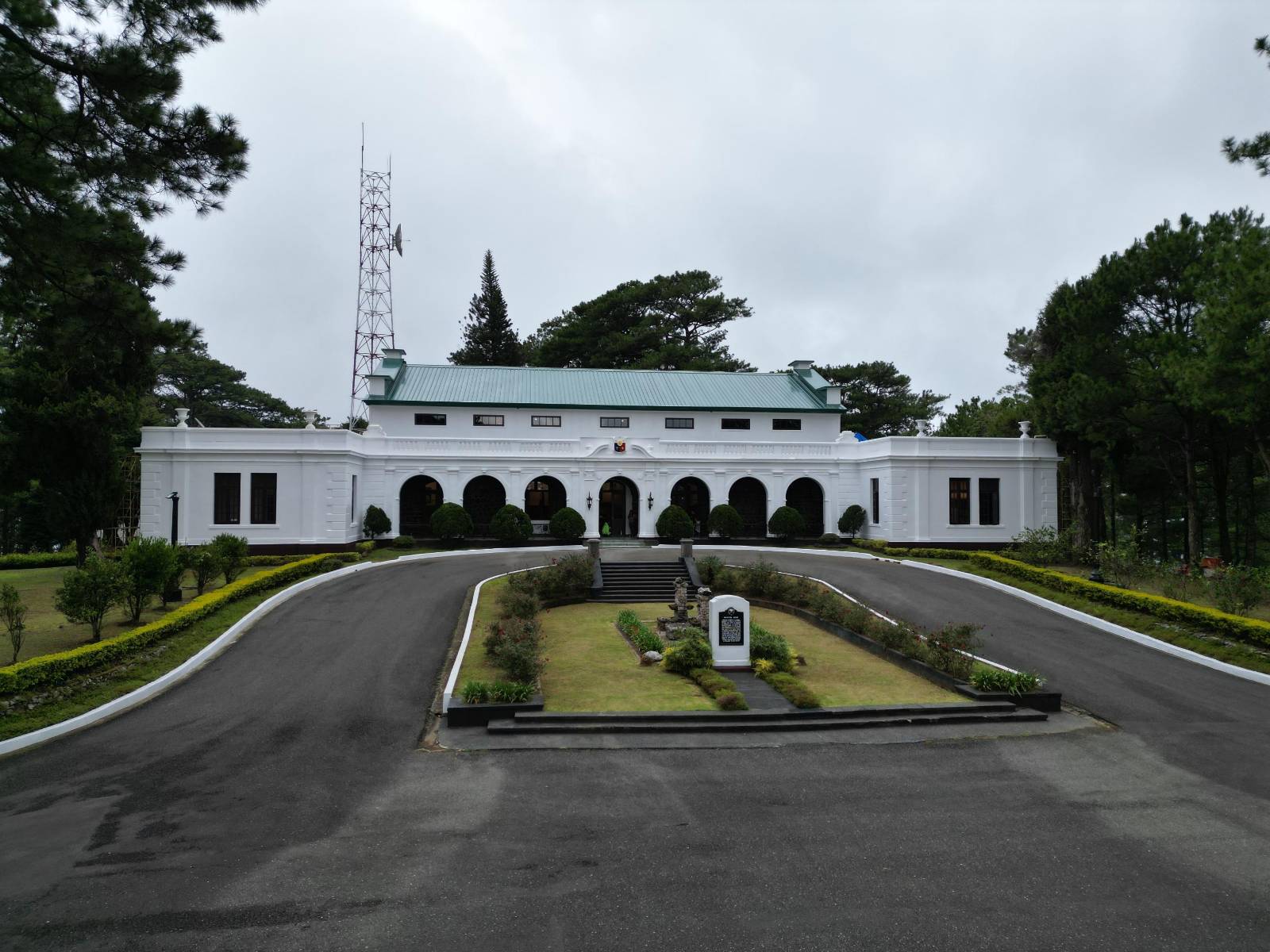
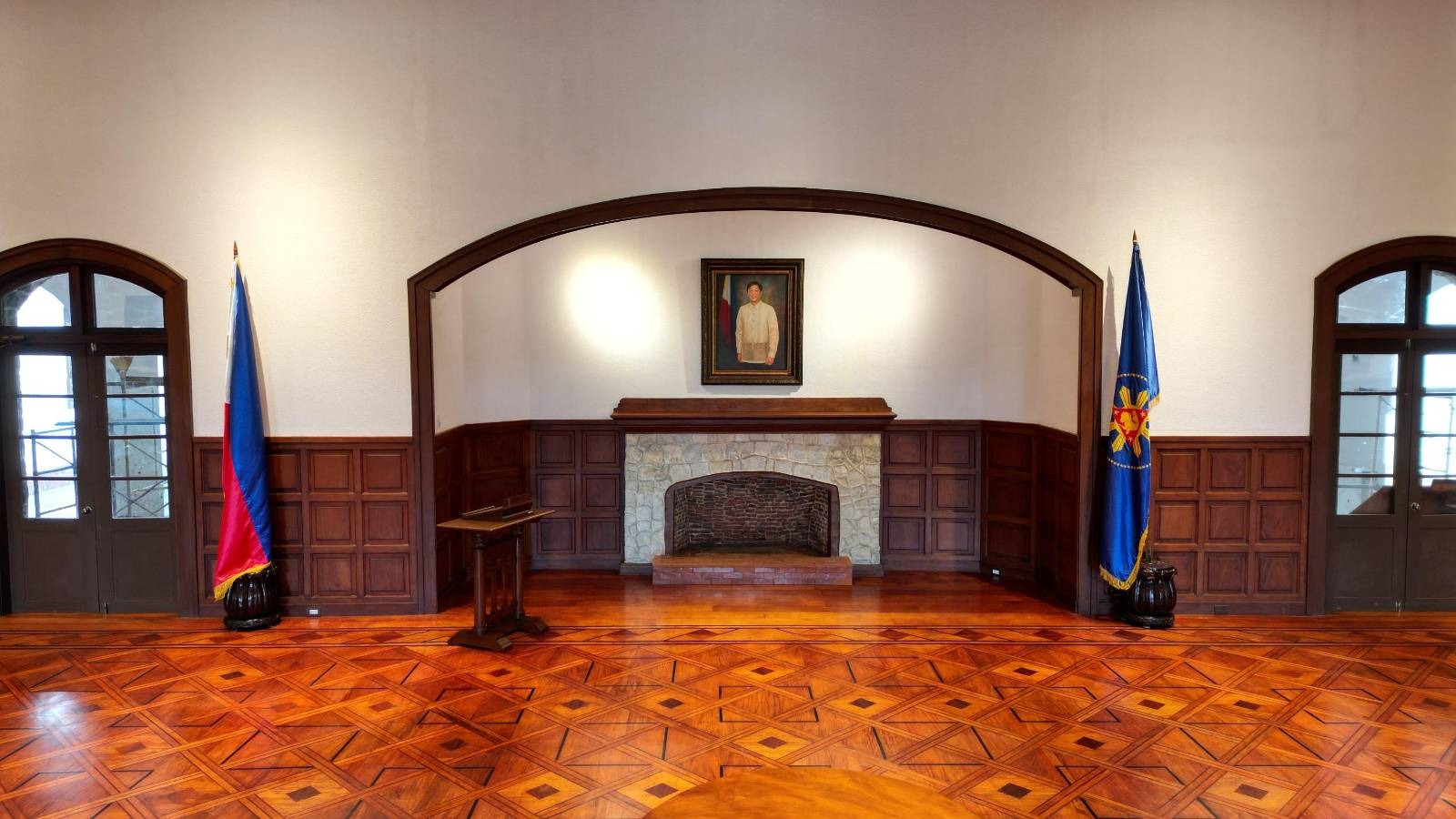





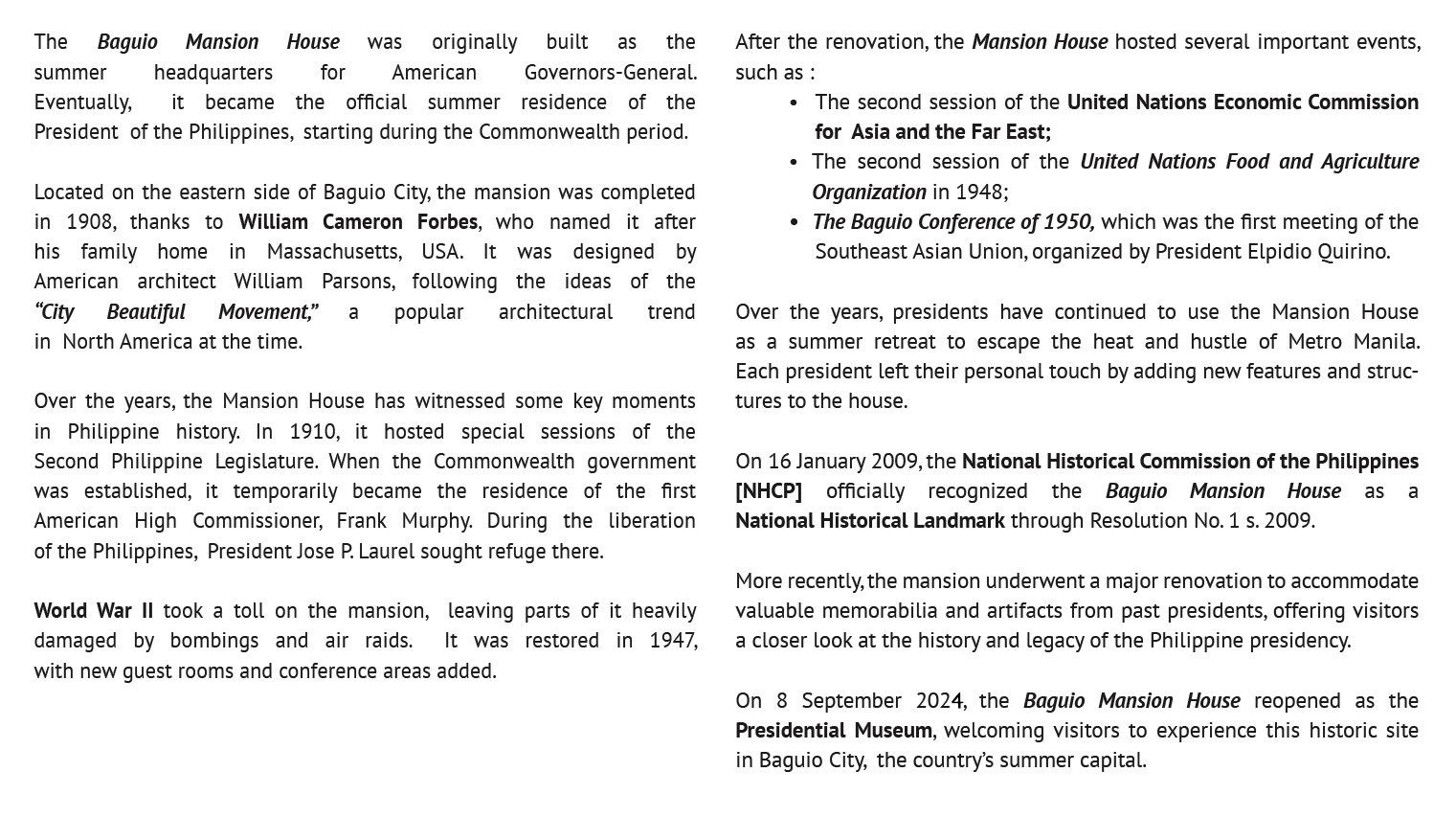
The Baguio Mansion House was originally built as the summer headquarters for American Governors-General. Eventually, it became the official summer residence of the President of the Philippines, starting during the Commonwealth period.
Located on the eastern side of Baguio City, the mansion was completed in 1908, thanks to William Cameron Forbes, who named it after his family home in Massachusetts, USA. It was designed by American architect William Parsons, following the ideas of the “City Beautiful Movement,” a popular architectural trend in North America at the time.
Over the years, the Mansion House has witnessed some key moments in Philippine history. In 1910, it hosted special sessions of the Second Philippine Legislature. When the Commonwealth government was established, it temporarily became the residence of the first American High Commissioner, Frank Murphy. During the liberation of the Philippines, President Jose P. Laurel sought refuge there.
World War II took a toll on the mansion, leaving parts of it heavily damaged by bombings and air raids. It was restored in 1947, with new guest rooms and conference areas added.
After the renovation, the Mansion House hosted several important events, such as :
Over the years, presidents have continued to use the Mansion House as a summer retreat to escape the heat and hustle of Metro Manila. Each president left their personal touch by adding new features and structures to the house.
On 16 January 2009, the National Historical Commission of the Philippines [NHCP] officially recognized the Baguio Mansion House as a National Historical Landmark through Resolution No. 1 s. 2009.
More recently, the mansion underwent a major renovation to accommodate valuable memorabilia and artifacts from past presidents, offering visitors a closer look at the history and legacy of the Philippine presidency.
On 8 September 2024, the Baguio Mansion House reopened as the Presidential Museum, welcoming visitors to experience this historic site in Baguio City, the country’s summer capital.
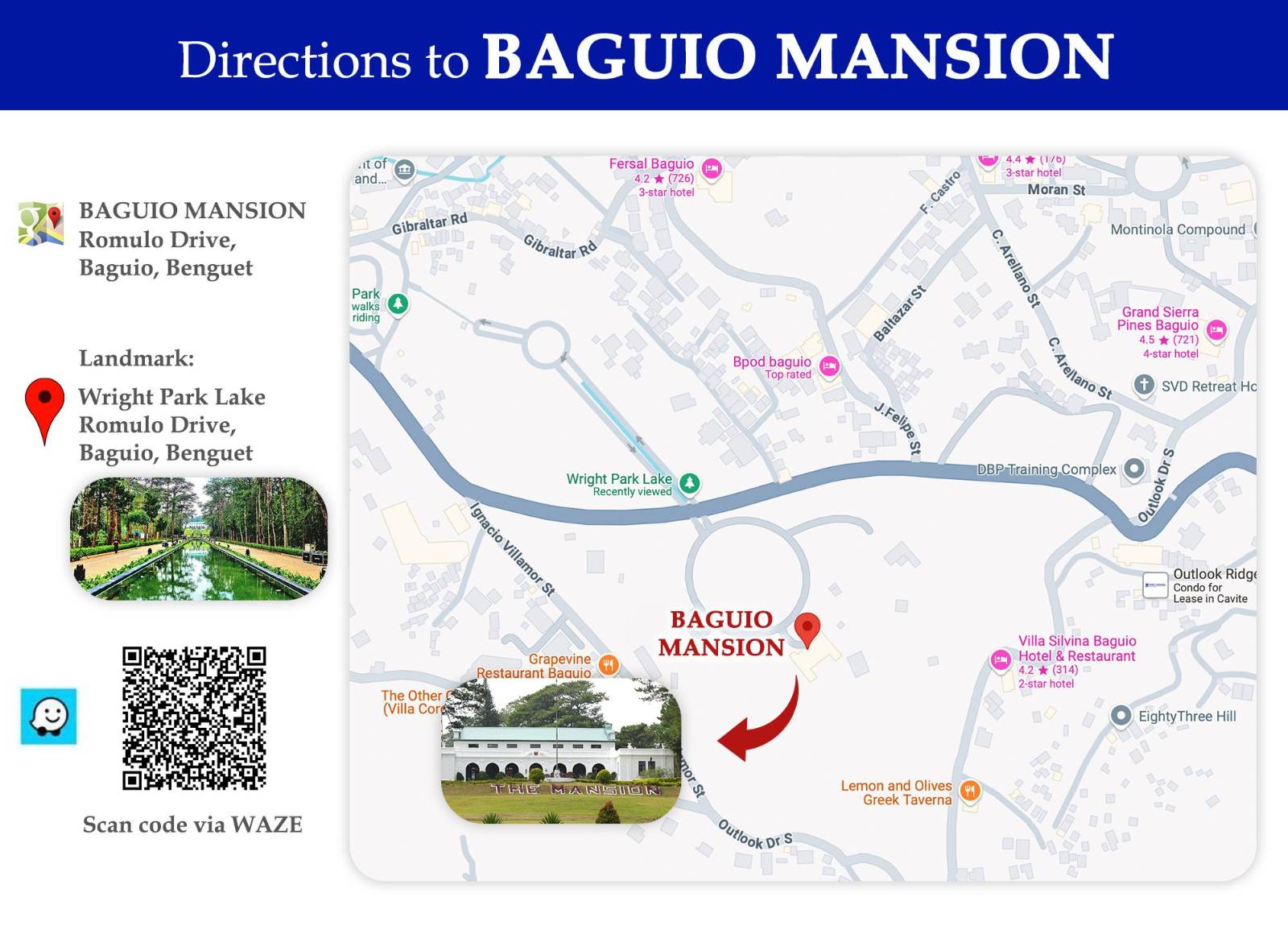
Baguio Mansion House is open to everyone from Tuesdays to Sundays, 8am to 5pm and the best part - admission is free!
For private tours, reservations are required, but walk-ins are welcome too, depending on available tour slots.
We'd love to have you visit!